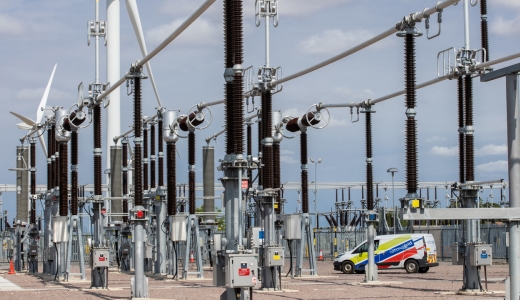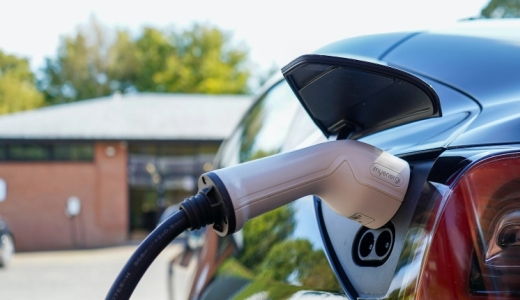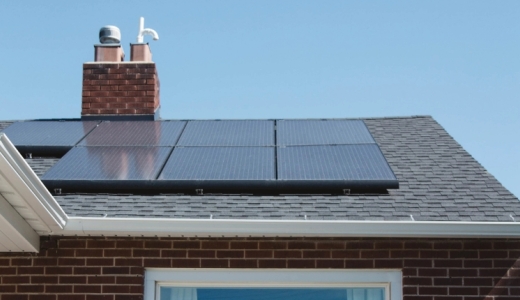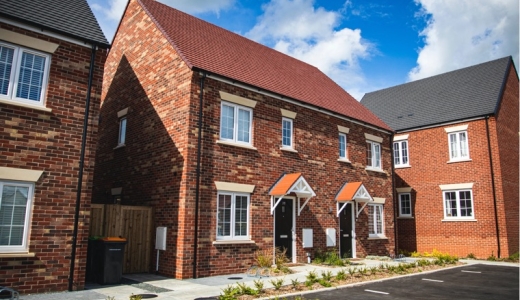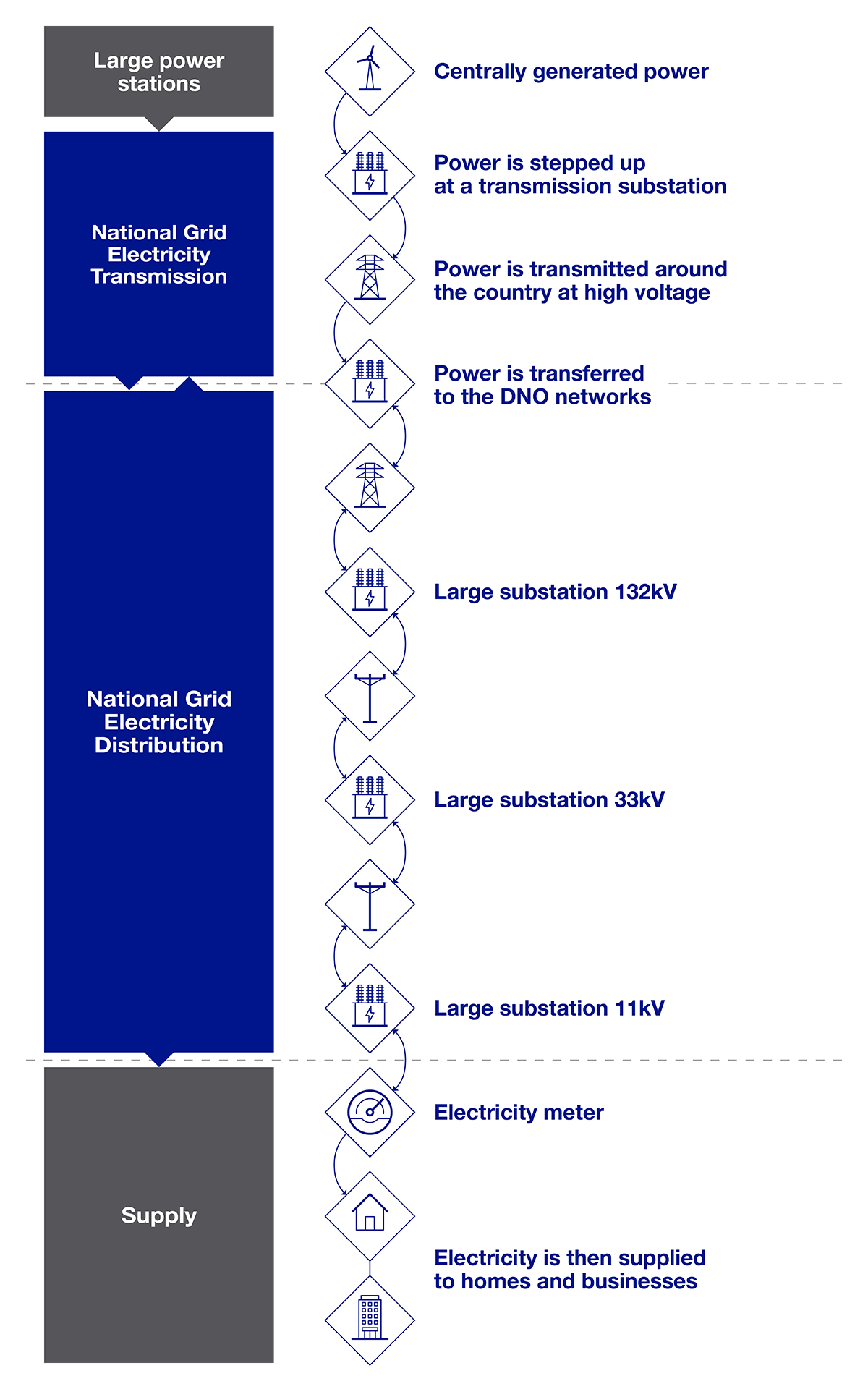Which connection service do you need?
Explore some of our common connection enquiries below to find out which of our organisations might be able to help you.
How different types of generation and demand connect

Transmission Owners
The transmission network is responsible for transporting electricity across the country, from its point of generation into our local networks. Distribution networks are responsible for the local systems, transporting electricity from transmission through to end customers.
Across England, Wales and Scotland, there are three Transmission Owners. They are responsible for the national high voltage networks and transmission connections. National Grid Electricity Transmission manages England and Wales, with Scottish Power (SP) Transmission and Scottish & Southern Electricity Networks (SSEN) Transmission in Scotland.
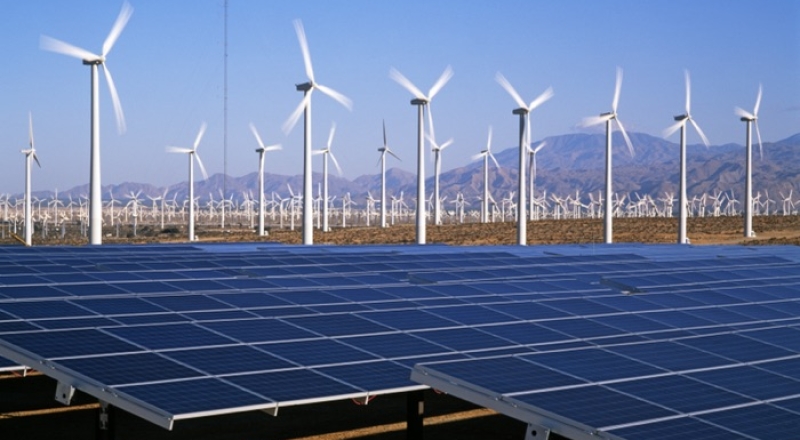
Generators and storage connections
Larger projects connect directly into the high voltage transmission networks, including onshore and offshore wind farms, solar farms, battery storage, tidal power, nuclear and gas-powered generators.
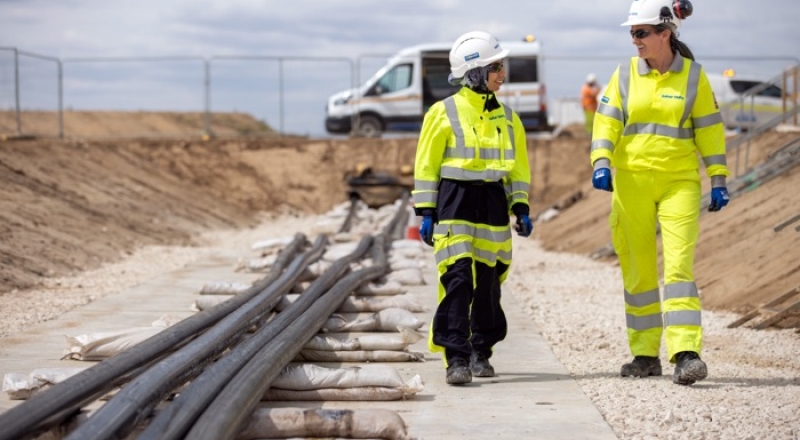
Interconnectors
Interconnectors connect directly into transmission networks. They bring power from other countries to help meet demand here or export it in times of oversupply.
Transmission connected demand
Some users may need to take power from the transmission network to supply networks or industrial centres.

Large industrial demand
Large consumers of electricity, such as steel manufacturing, data centres, or the railway can connect directly to the high voltage transmission system.
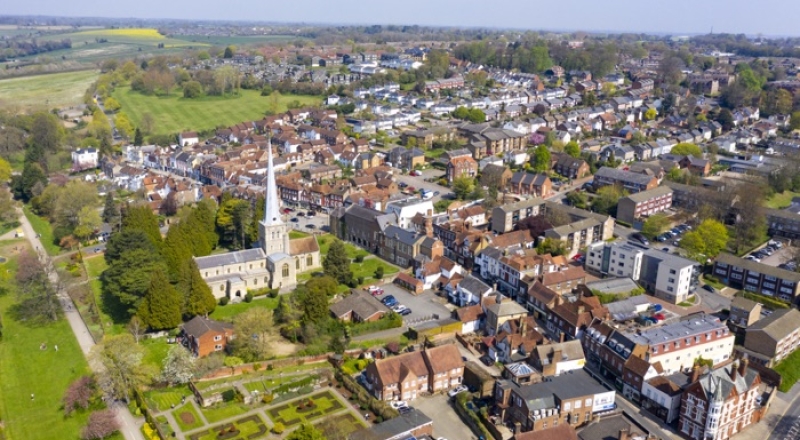
Distribution Network Operators
Distribution Network Operators (DNOs) ensure that the local lower voltage networks which supply domestic homes and businesses are working effectively. They maintain their own network assets and connect their own users via their own infrastructure.
Independent Distribution Network Operators (IDNOs)
IDNOs own and operate small, independent networks within existing demand networks controlled by the DNOs. They can be set up for domestic or business uses and are responsible for maintenance and new connections in their area.
Smaller generation
Smaller generation and storage projects are likely to connect to the distribution networks. For example, local solar farms or small battery plants.
Smaller scale industrial
Factories or industry wishing to connect either small scale generation or to connect new infrastructure must apply through the DNO connections process.
Housing developments
New housing developments connect directly to the DNO networks, with the size of the development dictating how much work needs to be completed to ensure supply.


